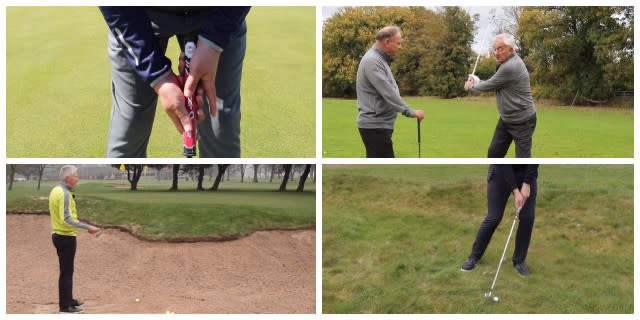Rules Relating to Water Hazards
It is apparent to me that many golfers have played the game for years without properly understanding what to do if their ball lies within the margin of a water hazard. If you are amongst them I think that you will find this summary of the main issues helpful;
- A ball is in a water hazard when it lies in or any part of it touches the water hazard, including when it touches a stake that defines the margin (Definition of Water Hazard).
- Yellow stakes and/or lines designate water hazards, where the player has three options;
- Play the ball as it lies.
- Play a ball as nearly as possible at the spot from which the original ball was last played (see Rule 20-5).
- Drop a ball behind the water hazard, keeping the point at which the original ball last crossed the margin of the water hazard directly between the hole and the spot on which the ball is dropped, with no limit to how far behind the water hazard the ball may be dropped (see Rule 26-1b).
- A lateral water hazard is a water hazard so situated that it is not possible, or is not practicable, to drop a ball behind the water hazard in accordance with Rule 26-Ib (see above).
- Red stakes and/or lines designate lateral water hazards, where the player has five options. The same three options as for water hazards (above) and two additional options;
- Drop a ball outside the water hazard within two club-lengths of and not nearer the hole than (i) the point where the original ball last crossed the margin of the water hazard or (ii) a point on the opposite margin of the water hazard equidistant from the hole (Rule 26-1 c).
- Drop a ball outside the water hazard within two club-lengths of and not nearer the hole than (i) the point where the original ball last crossed the margin of the water hazard or (ii) a point on the opposite margin of the water hazard equidistant from the hole (Rule 26-1 c).
- If a stake is obviously missing, or improperly installed, the player must estimate the natural boundaries of the water hazard to judge whether their ball lies in the hazard (Decision 26-2).
- Yellow and red stakes are movable obstructions (Definition of Water Hazard), i.e. they can be moved if they interfere with the player’s stroke (and replaced after the stroke is made!)
- A player may move movable obstructions from a water hazard, i.e. artificial objects such as bottles, cans or paper (Rule 24-1).
- A player may not move loose impediments from a water hazard, i.e. natural objects such as stones, twigs or leaves (Rule 23-1).
- A player may not take relief from interference by an immovable obstruction that is in a water hazard, e.g. a bridge.
- When a player’s ball lies inside a water hazard they may not touch ground or water inside that water hazard with their hand or a club, Rule 13-4b. This even applies on the backswing of their stroke, Rule 13-4c. However, at any time, a player may touch, with a club or otherwise, any obstruction, any construction declared by the Committee to be an integral part of the course, or any grass, bush, tree or other growing thing, Note to Rule 13-4.
- A player may stand inside the margin of a water hazard to play their ball that lies outside of the hazard, even after they have dropped the ball. In other words, there is nothing in Rule 26-1 that says a player must take ‘complete’ relief from the hazard, which is different from Rule 24-2, Immovable Obstruction, and Rule 25-1, Abnormal Ground Conditions.
If you are still unsure about how to take relief from (lateral) water hazards I think that you will find my two short videos on the subject useful. Click below.
Good golfing,
Related Content:
Article from Barry Rhodes author of the book, ‘999 Questions on the Rules of Golf 2016’
Barry is author of the book, ‘999 More Questions on the Rules of Golf 2016’ and writes a regular blog of miscellaneous content on the rules of Golf at www.barryrhodes.com
Related Video
Comments
Barry Rhodes
Barry is author of the book, '999 Updated Questions on the Rules of Golf 2012 - 2015' and writes a regular blog of miscellaneous content on the rules of Golf at www.barryrhodes.com
Latest Articles





















